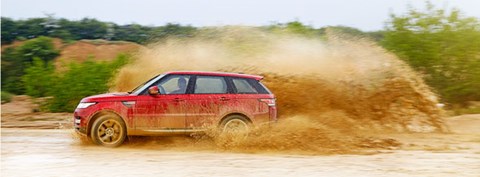
Page 106 of the new Range Rover Sport’s owner’s manual contains the following revelation: ‘this vehicle is not designed for cornering at the same speed as conventional passenger cars any more than a low-slung sports car is designed to perform satisfactorily under off-road conditions. If at all possible, avoid sharp turns or abrupt manoeuvres.’
Having driven the Range Sport around Rockingham’s soaking infield circuit 0.6sec faster than our ‘low-slung’ Subaru BRZ long-termer, that first bit of text is clearly cobblers’. Hold the Tipp-Ex on the second part, though, because I’ve just ploughed the Range Sport through an old quarry lake, water lapping over its headlights and a tsunami-sized bow wave threatening to engulf photographer Greg Pajo as I powered back onto dry land. After that, I don’t feel compelled to put a brand new Japanese sports car into a salvage auction to prove the point.
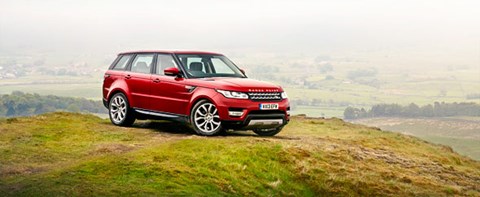
‘An automotive Swiss Army knife’
It’s an automotive Swiss Army knife, this Range Rover Sport, and very few cars have ever come anywhere close to its level of all-encompassing ability. We’re not driving the bells and whistles 5.0-litre supercharged Sport with its 503bhp and 461lb ft, either: this is the SDV6, a car that sits just one step up from the bottom of the range and one that Brits will typically buy. Its 3.0-litre twin-turbo diesel makes 288bhp and 443lb ft while promising 38mpg and 199g/km. You’ll pay from £60k, that figure rising to – hark the press car bells and whistles – £75k for our highfalutin Autobiography specification with its sliding panoramic roof , 18-way powered leather seats, heated steering wheel, three-zone climate and various other fripperies.
If you’ve ever driven the outgoing Range Sport, trading up to the new model will feel like stepping out of a pair of concrete boots. Push on down a tricky B-road and, yes, the 2005 Range Sport would show its bigger, lumbering Range Rover father a clean pair of heels, but then the 2002 Range Rover liked to roll about like a cat in a heatwave. It was the comparison with rivals – not relatives – that spotlighted the Sport’s deficiencies: it felt like a hefty, sometimes chaotic car to hustle and its Cayenne and X5/X6 classmates were a year advanced when it came to physics lessons. Not any more.
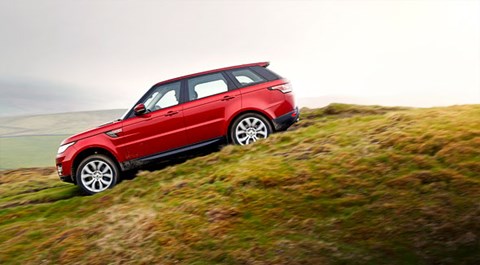
That’s because while the new model is still recognisably a Range Rover Sport – you need to see old and new side-by-side to really appreciate the quite radical differences – an engineering revolution lies at its core. The old Sport’s steel bodyshell was attached to a cut-and-shut Discovery T5 ladder-frame chassis; the new model features an aluminium monocoque that’s derived from the new Range Rover but is in fact 75% new.
‘Land Rover hasn’t just rescued the Range Sport from a tailspin’
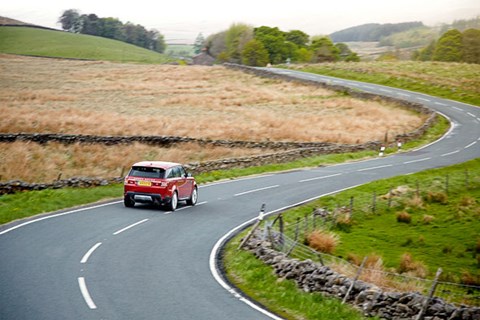
At a still-hefty 2115kg, our diesel V6 is nonetheless a substantial 420kg lighter – equivalent to a car full of adults each carrying a heavy suitcase! – than its predecessor, and it’s stiffer too, which means the engineers have been able to tune the suspension – double wishbone front, multi-link rear, air springs all round – for extra handling precision. The new Range Sport is lighter, it’s more agile, it’s faster, it’s more fuel-efficient – Land Rover hasn’t just rescued the Range Sport from a tailspin, they’ve pulled back on the controls and turned it into a virtuous circle.
But while experiments on-track and off-road illustrate the extremes of this car’s competencies, it’s the bit in the middle that we need to focus on, the bit that virtually every Range Sport owner is going to spend 100% of their time doing: driving it on the road.
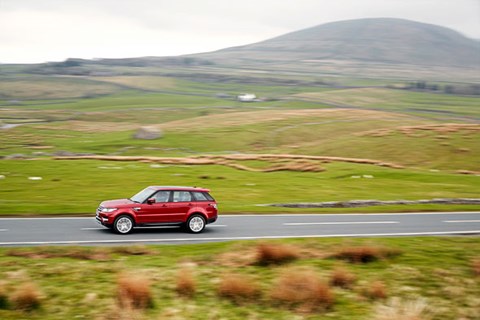
You climb into a cabin that feels almost a carbon copy of the new Range Rover with its aggressively angled dash, simplified interfaces and luxurious finishes. The corners of the car are easy to identify from the driver’s seat, the cockpit feels light and airy and rearward visibility is good considering you’re dealing with almost five metres of metal – our car’s reversing camera ably makes up for the bits you can’t see, and it’s a worthwhile £300 option on low-spec cars.
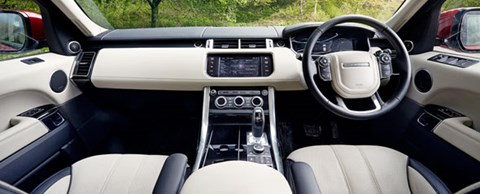
‘Trading regal for racy’
Yet there are some important distinctions versus the Range Rover, and they subtly signal what’s in store before you even press the starter button: the rotary gear selector is gone, replaced by a stubby Jaguar F-type stick; you sit lower in seats that remain extremely comfortable but offer far more aggressive lateral support; and the steering wheel is noticeably smaller, a clear nod that you’re trading regal for racy.
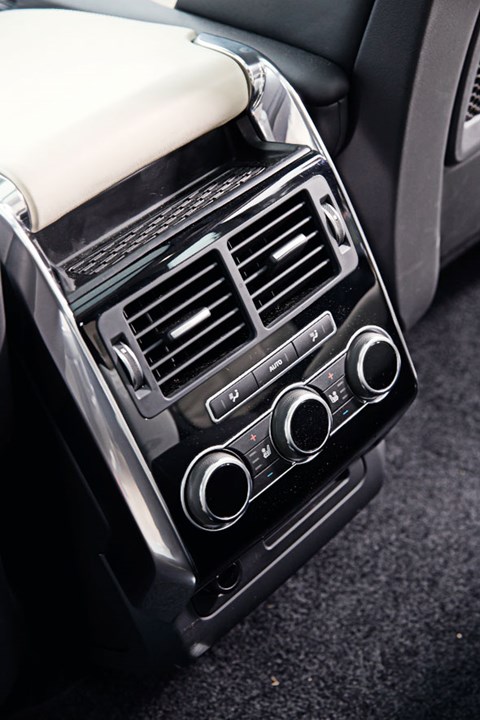
It’s a fabulous ambience, one that’s let down only by a pair of clicky, cheap-feeling paddleshifters and that dated infotainment system that’s still too unintuitive and requires too many button pushes to access its functions. The new shortcut buttons that border the screen are a partially successful fix, but they’re sticking plasters that disguise a deeper malaise. Arms shorter than a T-Rex? Just try tapping the ‘menu’ button on the far left of the screen: the rakish dash means it’s as out of reach as the ticket at the multi-storey car-park barrier. The German rotary controllers do it better, and one day Jaguar Land Rover will abandon this entire philosophy in favour of something more intuitive and less distracting. Preferably something that better compliments the slick TFT renderings of analogue dials that fill the instrument binnacle on our top-spec car (lower specs get plain old dials, sorry).
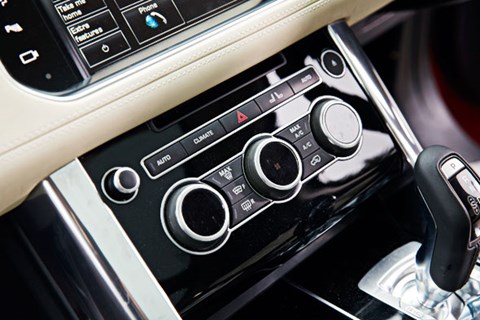
But on the A1, heading for North Yorkshire, the niggling gripes melt into the background because the Range Sport proves a faultless companion: the ride quality on our 21-inch rims is superb, a spot-on combination of tied-down body control and easy, indulgent compliance; wind and tyre-noise is a distant hum; the eight-speed auto slips through its ratios like a blackjack dealer expertly shuffling the pack and the V6 turbodiesel is happy to play wallflower.
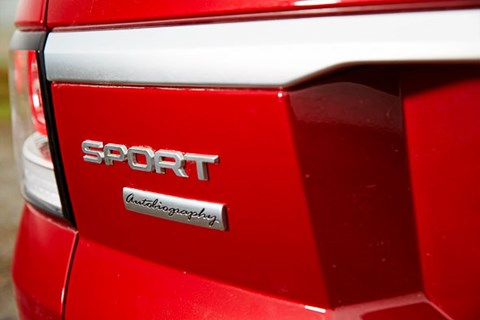
Despite its dynamic brief, the Range Sport cocoons like a limo, and it’s far kinder to those in the back than it once was, largely because the dimensions are suitably enlarged: the wheelbase stretches by 178mm, and it’s 4mm lower and 62mm longer too. So the boot is larger at 784 litres – though it still looks relatively small for such a big car, the high boot floor disguising our optional, whopping full-size spare that now sits under the carpet rather than dangling below the chassis like a cow that’s missed a milking. That stretch in wheelbase means the looks are far better balanced than the truncated original, and there’s more space for rear-seat lounging – you can even recline the rear seats for a properly business-class experience. The rear headrests might be far firmer than the S-class-like plumpness that indulges those up front, but George Michael will be no safer from dozily plunging onto the fast lane of the M1 than he was while relaxing in the back seats of any other Range Rover.
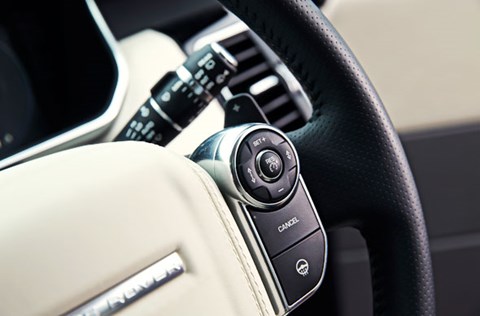
Not convinced that a car this big and seemingly practical can seat only five? You can spec a part-time third row of seats, and they could prove a life-saver for larger families and celebrity narcoleptics alike, though for rather different reasons.
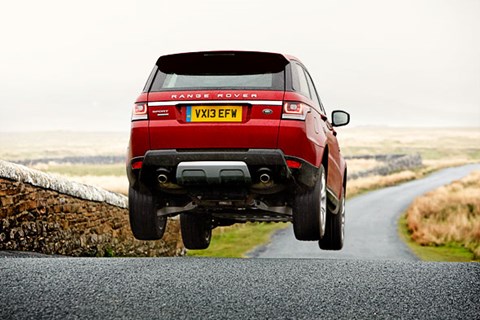
‘Best-of-both-world’s fix for agility and ride quality’
A couple of hours of painless dual-carriageway schlepping and we’re off the major routes, ready to scythe across the epic sweeps and undulations of the Yorkshire Dales. It’s at this point that Land Rover suggests you hand over a little more cash: base cars get standard dampers and anti-roll bars, but you can also choose active dampers and standard anti-roll bars while high-spec models get a Dynamic chassis that heralds active dampers and active anti-roll bars that firm up during cornering but de-couple on the straights to give a best-of-both-world’s fix for agility and ride quality. Range Sports that come with that latter option also come with an electronically controlled rear locking differential and torque-vectoring tech.
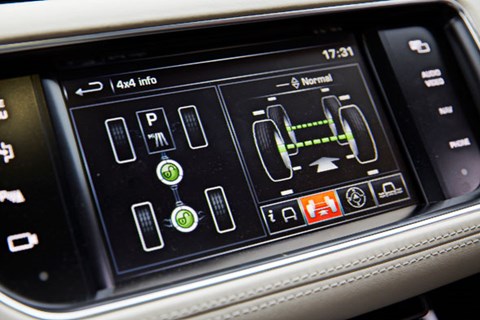
Absolutely no prizes for guessing that the press office has supplied us with a Dynamic-equipped car, something that’s absent from the TDV6 and base SDV6 models, coming on stream only with the £65k SDV6 HSE Dynamic and our £75k SDV6 Autobiography.
Reach down to the Terrain Response dial – usually synonymous with its mud and ruts and grass/gravel/snow off-road settings – and switch it to the squiggly road symbol and you’ll tap into the full performance-boosting spectrum that the Dynamic cars offer: it firms up the dampers, adds a bit more weight to the steering and diverts additional torque from the front to the rear wheels.
Unlike some German rivals, there’s not a massively pronounced difference between the dampers in their Dynamic and standard modes, but you do notice that the body control tightens up and the chassis stops its light rocking back and forth, and yet the trade-off in ride quality is so small that you could easily forget that you’ve gone hardcore, and end up defaulting to it all the time. I did; I preferred it.
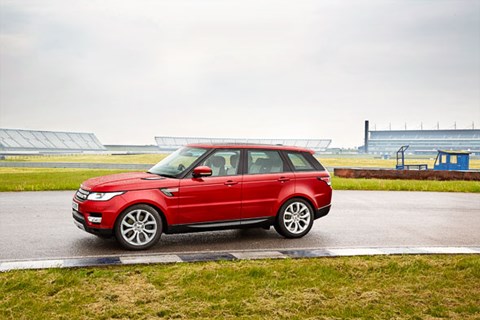
The steering – an electro-mechanical system the like of which is so often whinged about when we’re road-testing Porsches – is beautiful: nicely weighted, quick, responsive and accurate, and there are even subtle hints of the fizz and buzz of the road surface making its way back up through the rack.
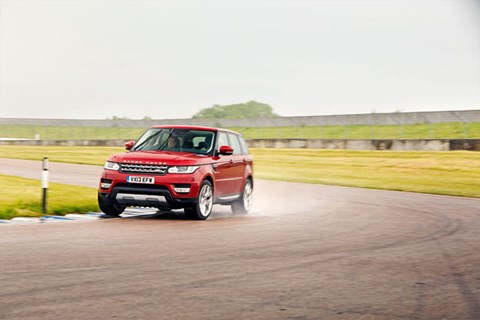
And we already know that this thing can carve corners, right? There’s limited roll and tenacious grip from the front end that will cede to understeer if you’re over-ambitious, but more likely you’ll sense that you’ve worked the front tyres to their limits and ease the car into the corner, then get back on the throttle really early and let the E-diff and torque vectoring and anti-roll bars do their thing, swooping you through the apex and powering you out of a bend that’d see you disappearing for a spot of spontaneous off-roading if you tried the same thing at the same speed in the old car.
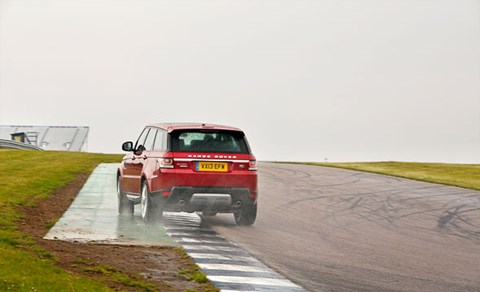
‘It feels mischievously good to drive’
Throw in a sodden surface and you’d have some difficulty shifting a well-driven Range Sport from the rear-view mirror of a modern performance car such are its point-to-point abilities. The elevated seating position makes sighting cross-country easy, gives excellent visibility for overtaking, and then you just lean on that chassis, knowing that there’s abundant grip, that there’ll be no lurching and untidy compressing of suspension as you flick-flick through direction changes. It feels mischievously good to drive.
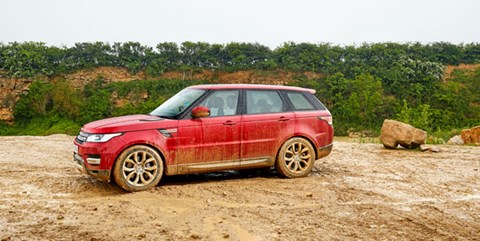
There is an Achilles heel for our SDV6, though, and it’s a big one: it’s just not quick enough, the powertrain relying on the brilliant chassis to supply the speed rather than the grunt alone. The same engine in a Jag XF Sportbrake feels only just potent enough to deliver the kind of thrust we’ve been so spoilt with in modern six-pot turbodiesels. In the Range Sport, with an extra 235kg to lug, it feels noticeably blunted, and at first you’ll probably shift down when you feel the mid-range isn’t quite delivering the pace you expected, only to find yourself rapidly climbing out of the powerband and wishing there was more top-end to exploit. The reluctant, soggy throttle response doesn’t help the cause, either.
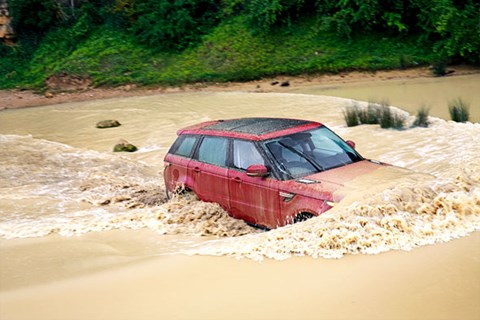
It leaves a gap for a rival to nip in and romp to glory, and that rival already exists: a Porsche Cayenne Diesel S is yours for £58k – £2k cheaper than a basic SDV6 – and its V8 turbodiesel blows our test car so far into the weeds that you’ll need every bit of the Range Sport’s four-wheel-drive hardware to get it back out again. Is the Cayenne as good off-road? Probably not, but we know that’s its abilities are still far beyond what pretty much anyone out there actually requires.
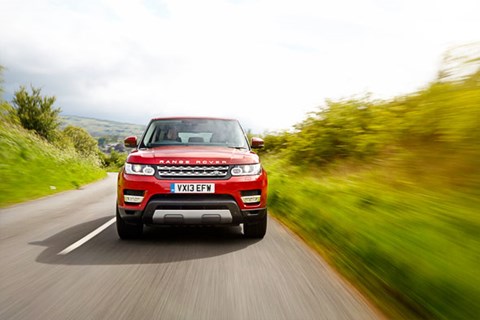
The Range Sport stands as a massive achievement, a car I’d happily own and recommend, but the Cayenne Diesel S does everything that you actually need it to do as well or better and it’s yours for less cash – as much as £7k less if you factor in the Dynamic kit you’ll need to make your Range Sport handle like ours. How do you argue with that?
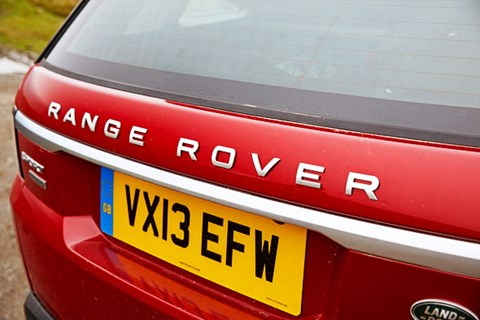
Words: Ben Barry Photography: Greg Pago